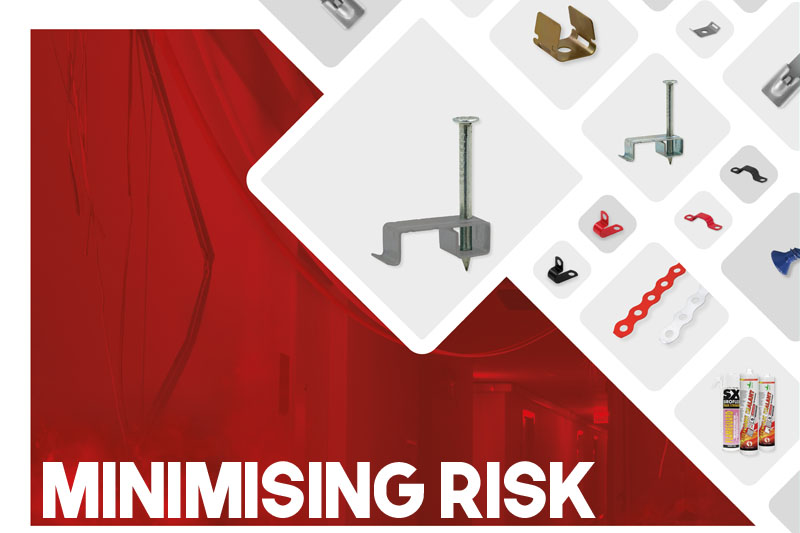Neil Baldwin, Managing Director at ESP, looks at the self-test area of the emergency lighting sector, how it can save building owners time and money and why wholesalers should be stocking these products.
Emergency lighting is a legal requirement in almost every building, with one simple, life-saving task: to provide light if a power outage shuts down a building’s standard operational lighting. It is the responsibility of building owners and responsible persons to prove that the emergency lighting systems they are responsible for are working correctly and are regularly maintained so that they are in full working order.
All emergency lighting installations must have routine tests carried out, with each system luminaire the subject of daily, monthly and annual testing. These tests should all be documented with the results including maintenance and rectification results all held on file.
Manual vs self-test
Whilst the testing of emergency lighting does not take much effort and isn’t difficult, manually inspecting every single lighting luminaire for lamp starting, operation and duration performance can be can be a very labour intensive, and therefore expensive, task. However, with the latest improvements in technology, routine testing can be simple, automatic and therefore much less expensive. It is now possible for building owners to take advantage of emergency lighting equipment that ‘self-tests’ in accordance with the relevant standards.
Installing self-test emergency lighting units can reduce the burden of testing emergency lighting installations as they perform all mandatory testing automatically, removing the need for manual testing to be carried out by the contractor or building owner. The resulting reduction of labour time leads to inevitable cost savings. Whilst the initial costs for the products may be higher, overall they will provide a very short payback period – making them an ideal option that should be given consideration at the beginning of any project.
The benefits of self-test emergency light units include ease of installation, with no need for key switches, data cables for example. Convenience is also a major plus, with mandatory tests carried out without disruption to the normal use of the building, and any faults identified. The self-test units identify faults in luminaires and any faults are then highlighted to maintenance personnel, saving them the time and effort it would take to search the building in question for faults.
How does self-test work?
Self-test units use an accurate internal clock programmed to interrupt the permanent mains supply at set intervals, initiating emergency lighting tests. Short duration weekly and monthly tests and annual full duration tests are automatically activated with the results shown via an LED indicator on the light. The responsible person only needs to check the indicator and it means that only lights with reported faults will need to be attended to by maintenance personnel.
During initial power up of a self-test unit, an automatic commissioning stage will begin. The internal clock will commence at a random time between 0 and 24 hours – this avoids the luminaires all going into test at the same time. After the initial charge up time (up to 72 hours), the unit will carry out a full duration test. After all initial tests are completed successfully the inbuilt processor will start the standard programmed test schedule, reporting failing functions via the status LED. In addition it is also possible to initiate a manual test on self-test emergency lighting fittings for extra peace of mind.
Results
Monitoring the results is straightforward. A single, bicolour LED indicates the system status. A green LED on constant with a pulse once every minute shows that the micro-processor is active and functioning. A ‘battery low’ status will be indicated by an amber LED flashing and internal buzzer which sounds for 10 seconds every four hours. If a fault clears the LED indicators will return to green. During the test periods the following statuses will apply:
- Green LED on constant
- Passed test – LED returns to green
- Failed test – Red LED flashing
What’s in the range?
The company has recently added a range of Self-Test Emergency Light Fittings which offers numerous benefits over standard fittings by reducing the costs and time associated with manual testing and inspection.
There are five new self-test products to its growing Duceri Emergency Lighting range including:
- 3W LED Maintained Emergency Self-contained Downlight with Self-Test and Interchangeable Open and Corridor Lens.
- 3W LED Emergency Open Lens Downlight with Self-Test
- 9W LED IP65 Non-Maintained Emergency Twin Spot with Self-Test
- 3W LED IP65 Maintained Emergency Bulkhead with Self-Test
- 3W LED Maintained Emergency Exit Box with Self-Test
The new Self Test range of products has all been tested and complies with the latest standards. They are easy to install and offer convenience and reduced maintenance time and costs.
FOR MORE INFORMATION
For further information contact ESP on 01527 515150, email info@espuk.com or visit: www.rdr.link/WH011




